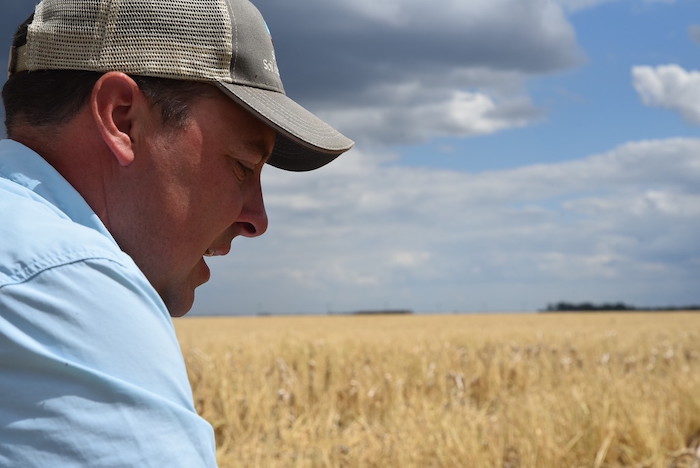The adaptable Johnsons of Frankfort, S.D. are trying new things all the time.
No-tillers Brian and Jamie Johnson aren’t afraid to stand out, and they’ve tried two approaches for things that could be available for the fall.
Together they have about 1,700 acres of cropland, 700 acres of pastures, 100 head of cow/calf pairs and 25 bred heifers. They have a dedicated corn-soybeans rotation, with fall cover crops in the mix as well.
Garden As Laboratory. Past implementations in the field have succeeded well enough to push into the kitchen garden, and vice versa.
Jamie started no-tilling potatoes in her garden. Growing up on a dairy farm in Knox County, Neb., she provides a fresh perspective to the family’s row crop operation. She is often the driving force behind the Johnsons' innovations and willingness to try new things.
“She is always asking questions and challenging me to do something different,” Brian says. “She always has ideas.”
Covers From Above.Jamie began experimenting with cereal rye as a cover crop in the family’s home garden. The success in the garden led them to try cover crops on their commercial acreage 15 years ago. The Johnsons still use rye and have added some cover crop mixtures.
Jamie Johnson suggested aerial seeding rye as a cover crop following corn 3 years ago. Each spring after planting soybeans, the Johnsons kill off the rye using glyphosate. They make sure to select soybean varieties that will tolerate the chemical’s presence.
Brian says the rye helps with soil health, improves water infiltration, reduces broadleaf weed pressure and provides a wintertime habitat for wildlife.
“The biggest regret I have is that we did not fly rye onto the whole farm in the fall of 2021 and left it off 20-30% of the acres,” Brian says. “I saved 10-15% an acre this year on herbicides in my no-till soybeans because I had rye growing in those fields. Last spring, we did not have any dust coming off our fields in April because the rye was 6 inches tall.”
They’re also not afraid to adjust tactics to meet adverse conditions.
When a portion of their cropland was adversely impacted by saline 12 years ago, the Johnsons moved the troubled areas into the Conservation Reserve Program, which uses salt-tolerant grasses to reduce the soil’s salinity.
 Crops grow on heavy residue at the Johnsons' South Dakota Farm.
Crops grow on heavy residue at the Johnsons' South Dakota Farm.
Angled Beans.In the fall, the Johnsons harvest their soybeans at a 3-degree angle to feed the combine more consistently.
“About 10 years ago, we had an August hailstorm that bruised soybeans stems,” he says. “The beans leaned on the year-old corn stalks which kept them up and made them harvestable.”
As thoughts turn to 2023, the Johnsons say they have not yet decided which crops to plant on a few fields. They will patiently watch what happens this fall and winter before making a decision.
“I’m going to watch the weather and the fertilizer markets before I decide what to plant,” Brian says. “It’s really easy to plant corn, but if it gets dry, I might switch to more beans.”






